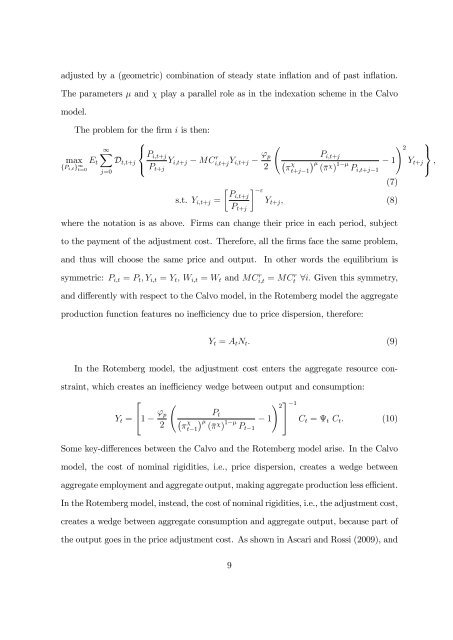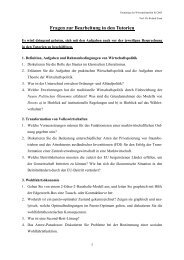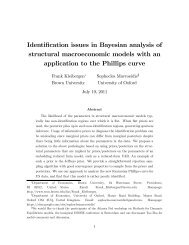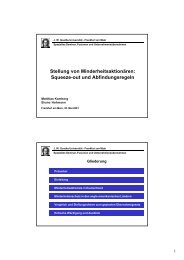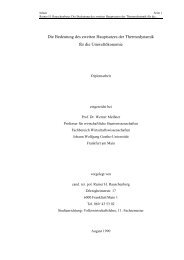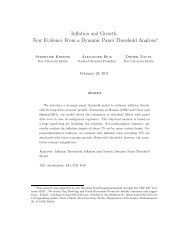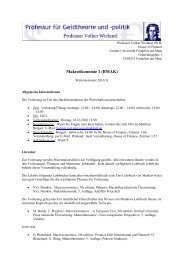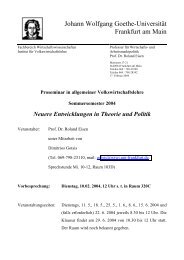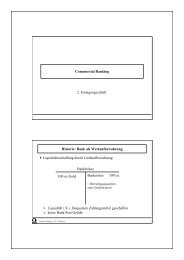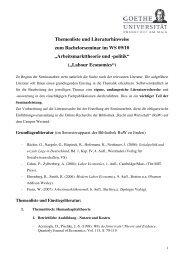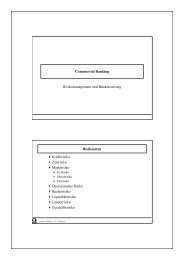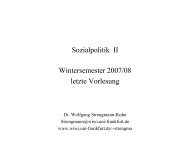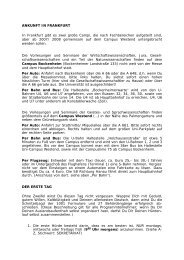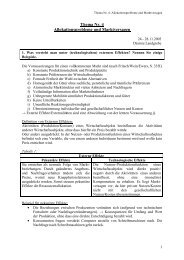Calvo vs. Rotemberg in a Trend Inflation World - Wiwi Uni-Frankfurt
Calvo vs. Rotemberg in a Trend Inflation World - Wiwi Uni-Frankfurt
Calvo vs. Rotemberg in a Trend Inflation World - Wiwi Uni-Frankfurt
You also want an ePaper? Increase the reach of your titles
YUMPU automatically turns print PDFs into web optimized ePapers that Google loves.
adjusted by a (geometric) comb<strong>in</strong>ation of steady state <strong>in</strong>‡ation and of past <strong>in</strong>‡ation.<br />
The parameters and play a parallel role as <strong>in</strong> the <strong>in</strong>dexation scheme <strong>in</strong> the <strong>Calvo</strong><br />
model.<br />
The problem for the …rm i is then:<br />
8<br />
1X <<br />
max<br />
fPi;tg1 Et<br />
t=0<br />
j=0<br />
Dt;t+j<br />
:<br />
Pi;t+j<br />
Yi;t+j MC<br />
Pt+j<br />
r i;t+jYi;t+j<br />
s.t. Yi;t+j = Pi;t+j<br />
Pt+j<br />
' p<br />
2<br />
Pi;t+j<br />
t+j 1 ( ) 1 Pi;t+j 1<br />
1<br />
(7)<br />
"<br />
Yt+j; (8)<br />
where the notation is as above. Firms can change their price <strong>in</strong> each period, subject<br />
to the payment of the adjustment cost. Therefore, all the …rms face the same problem,<br />
and thus will choose the same price and output. In other words the equilibrium is<br />
symmetric: Pi;t = Pt; Yi;t = Yt; Wi;t = Wt and MC r i;t = MC r t 8i: Given this symmetry,<br />
and di¤erently with respect to the <strong>Calvo</strong> model, <strong>in</strong> the <strong>Rotemberg</strong> model the aggregate<br />
production function features no <strong>in</strong>e¢ ciency due to price dispersion, therefore:<br />
Yt = AtNt: (9)<br />
In the <strong>Rotemberg</strong> model, the adjustment cost enters the aggregate resource con-<br />
stra<strong>in</strong>t, which creates an <strong>in</strong>e¢ ciency wedge between output and consumption:<br />
Yt =<br />
2<br />
41<br />
' p<br />
2<br />
Pt<br />
t 1 ( ) 1 Pt 1<br />
1<br />
! 2 3<br />
5<br />
1<br />
Ct = t Ct: (10)<br />
Some key-di¤erences between the <strong>Calvo</strong> and the <strong>Rotemberg</strong> model arise. In the <strong>Calvo</strong><br />
model, the cost of nom<strong>in</strong>al rigidities, i.e., price dispersion, creates a wedge between<br />
aggregate employment and aggregate output, mak<strong>in</strong>g aggregate production less e¢ cient.<br />
In the <strong>Rotemberg</strong> model, <strong>in</strong>stead, the cost of nom<strong>in</strong>al rigidities, i.e., the adjustment cost,<br />
creates a wedge between aggregate consumption and aggregate output, because part of<br />
the output goes <strong>in</strong> the price adjustment cost. As shown <strong>in</strong> Ascari and Rossi (2009), and<br />
9<br />
! 2<br />
Yt+j<br />
9<br />
=<br />
; ;


